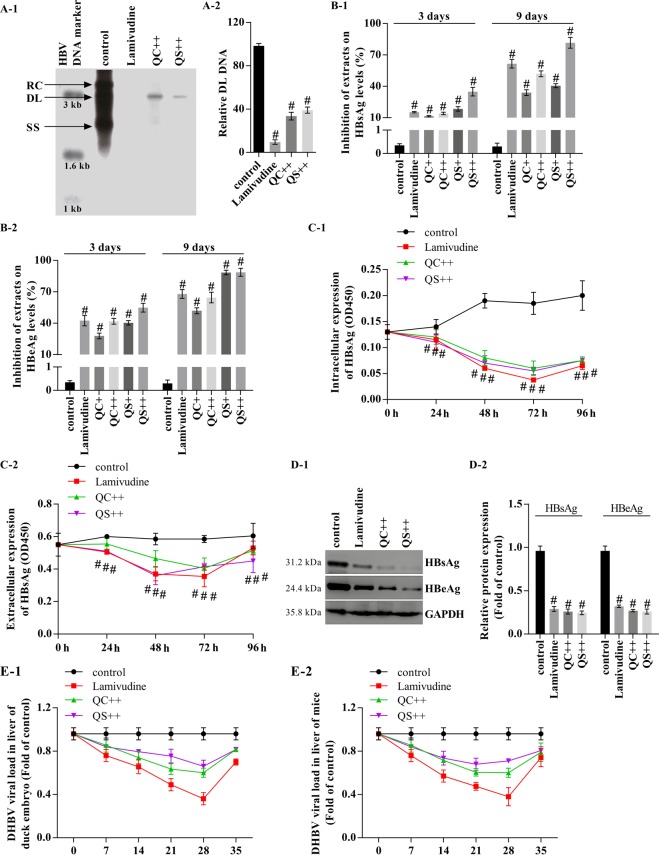Figure 6.
Qizhu decoction extracts inhibit HBV DNA synthesis and the secretion of HBsAg and HBeAg in vitro and in vivo. (A) Southern blotting to determine HBV DNA synthesis after treatment with lamivudine or QC and QS. At 1 day after transfection with HBV DNA, HepG2 cells were treated with QC and QS at concentrations of 5 μg/mL (QC+ and QS+) and 10 μg/mL (QC++ and QS++) or with lamivudine (4 μg/mL) for 48 h. HBV DNA was then extracted from isolated core particles, separated, transferred to nylon membranes, hybridized with a random-primed 32P-labeled HBV-specific probe, and subjected to autoradiography. Single-stranded and double-stranded linear DNA and partially double-stranded relaxed circular DNA are marked as SS, DL, and RC, respectively (A-1). The graph shows the level of DL DNA relative to that of HBV DNA in the absence of treatment, as measured by a Tanon 6600 Luminescent Imaging Workstation (A-2). Each value indicates the mean ± SD and is representative of results from three independent experiments; #P < 0.001 vs. control. (B) QC and QS inhibited the secretion of HBsAg and HBeAg from HBV WT DNA-transfected HepG2 cells (determined by ELISA). Each value indicates the mean ± SD and is representative of results from three independent experiments; #P < 0.001 vs. control. (C) QC and QS inhibited intracellular and extracellular HBsAg in HBV WT DNA-transfected PLC/PRF/5 cells (determined by ELISA). Each value indicates the mean ± SD and is representative of results from three independent experiments; #P < 0.001 vs. control. (D) QC and QS repressed intracellular HBsAg and HBeAg expression in HepG2 cells (determined by western blot). #P < 0.001 compared with the control. Each value indicates the mean ± SD and is representative of results from three independent experiments; #P < 0.001 vs. control. (E) Inhibitory effects of 30 g QC and QS/kg body weight daily on HBV DNA synthesis analyzed by real-time PCR in Guangzhou brown spotted ducks with congenital and acquired duck hepatitis B virus infection (E-1) and on HBV-induced hepatitis in mice (E-2). Lamivudine was used as a positive control at 200 mg/kg body weight daily.

